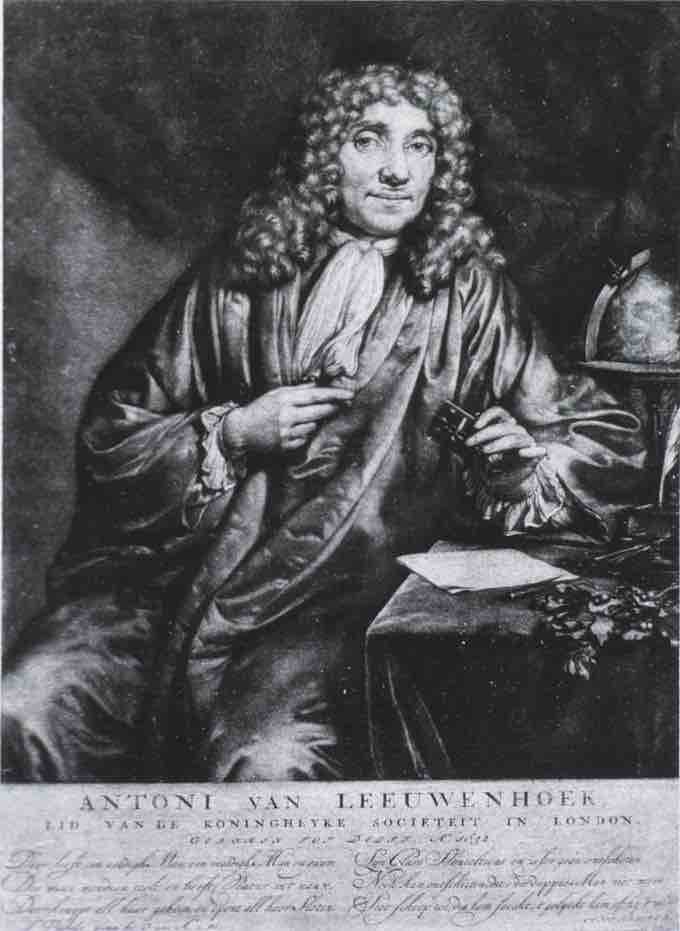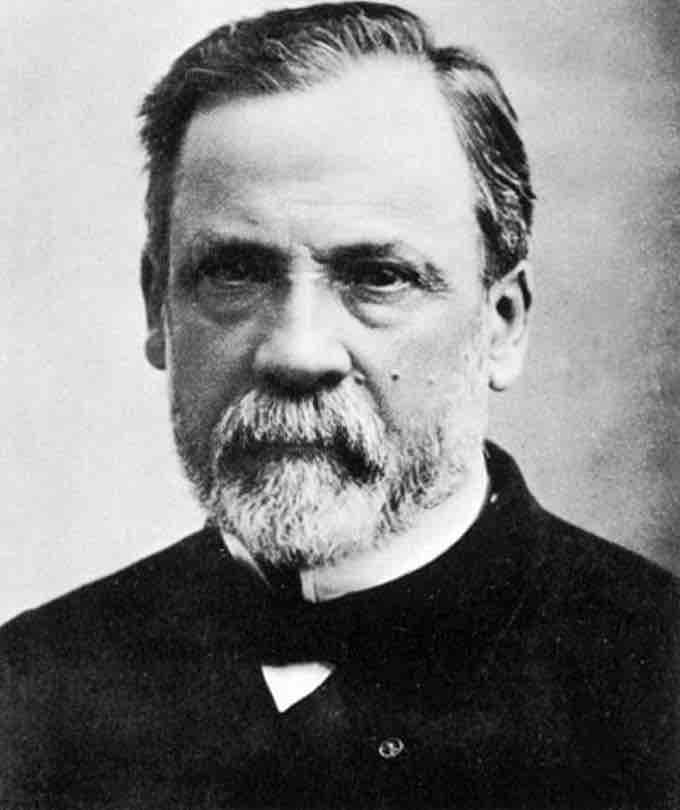Microorganism Speculation
Pre-microbiology, the possibility that microorganisms existed was discussed for many centuries before their actual discovery in the 17th century. The existence of unseen microbiological life was postulated by Jainism, which is based on Mahavira's teachings as early as 6th century BCE. In his first century book, On Agriculture, Roman scholar Marcus Terentius Varro was the first known to suggest the possibility of disease spreading by yet unseen organisms. In his book, he warns against locating a homestead near swamps because "there are bred certain minute creatures that cannot be seen by the eyes, which float in the air and enter the body through the mouth and nose and there cause serious diseases. " In The Canon of Medicine (1020), Abū Alī ibn Sīnā (Avicenna) hypothesized that tuberculosis and other diseases might be contagious. In 1546, Girolamo Fracastoro proposed that epidemic diseases were caused by transferable seed-like entities that could transmit infection by direct or indirect contact, or even without contact over long distances. All these early claims about the existence of microorganisms were speculative and were not based on any data or science. Microorganisms were neither proven, observed, nor correctly and accurately described until the 17th century. The reason for this was that all these early studies lacked the microscope.
The Microscope and Discovery of Microorganisms
Antonie van Leeuwenhoek (1632–1723) was one of the first people to observe microorganisms, using a microscope of his own design, and made one of the most important contributions to biology. Robert Hooke was the first to use a microscope to observe living things. Hooke's 1665 book, Micrographia, contained descriptions of plant cells. Before Van Leeuwenhoek's discovery of microorganisms in 1675, it had been a mystery why grapes could be turned into wine, milk into cheese, or why food would spoil. Van Leeuwenhoek did not make the connection between these processes and microorganisms, but using a microscope, he did establish that there were forms of life that were not visible to the naked eye. Van Leeuwenhoek's discovery, along with subsequent observations by Spallanzani and Pasteur, ended the long-held belief that life spontaneously appeared from non-living substances during the process of spoilage.

Antoni van Leeuwenhoek
A drawing of Antoni van Leeuwenhoek, one of the first scientists to use a microscope and identify microbes.
Lazzaro Spallanzani (1729–1799) found that boiling broth would sterilise it and kill any microorganisms in it. He also found that new microorganisms could settle only in a broth if the broth was exposed to the air. Louis Pasteur (1822–1895) expanded upon Spallanzani's findings by exposing boiled broths to the air in vessels that contained a filter to prevent all particles from passing through to the growth medium. He also did this in vessels with no filter at all, with air being admitted via a curved tube that prevented dust particles from coming in contact with the broth. By boiling the broth beforehand, Pasteur ensured that no microorganisms survived within the broths at the beginning of his experiment. Nothing grew in the broths in the course of Pasteur's experiment. This meant that the living organisms that grew in such broths came from outside, as spores on dust, rather than spontaneously generated within the broth. Thus, Pasteur dealt the death blow to the theory of spontaneous generation and supported germ theory instead.

Louis Pasteur.
The famous scientist Louis Pasteur, one of the founders of microbiology.
Ferdinand Julius Cohn (January 24, 1828 – June 25, 1898) was a German biologist. His classification of bacteria into four groups based on shape (sphericals, short rods, threads, and spirals) is still in use today. Among other things Cohn is remembered for being the first to show that Bacillus can change from a vegetative state to an endospore state when subjected to an environment deleterious to the vegetative state. His studies would lay the foundation for the classification of microbes and gave some of the first insights into the incredible complexity and diversity of microbial life.
In 1876, Robert Koch (1843–1910) established that microbes can cause disease. He found that the blood of cattle who were infected with anthrax always had large numbers of Bacillus anthracis. Koch found that he could transmit anthrax from one animal to another by taking a small sample of blood from the infected animal and injecting it into a healthy one, and this caused the healthy animal to become sick. He also found that he could grow the bacteria in a nutrient broth, then inject it into a healthy animal, and cause illness. Based on these experiments, he devised criteria for establishing a causal link between a microbe and a disease and these are now known as Koch's postulates. Although these postulates cannot be applied in all cases, they do retain historical importance to the development of scientific thought and are still being used today.